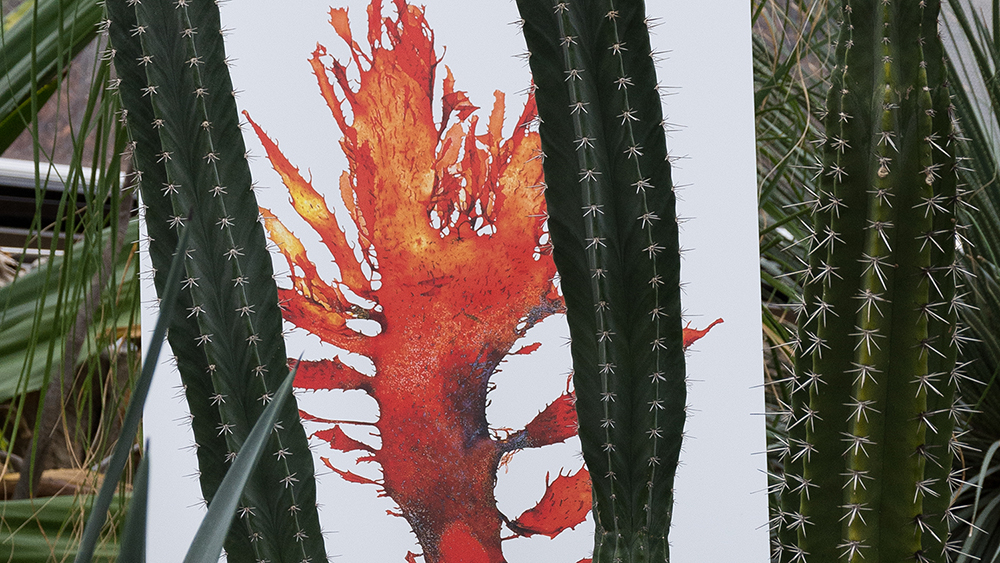Octopus’s Garden: The Stunning Life of Macroalgae

Around 2.5 billion years ago, blue-green algae, also known as cyanobacteria, started producing and releasing oxygen into the atmosphere. Without this evolutionary milestone life as we know it would not be possible: One in two oxygen atoms we inhale come from the photosynthesis of algae. Unlike microalgae, which can only be seen under a microscope, macroalgae are generally visible to the naked eye. They are classified into groups according to their color (green, red, blue and brown), with some species growing to a length of up to 40 meters. All land plants originally evolved from a group of green algae and are therefore – at least in the broadest sense – related to them.
Abstract natural beauty
From 25 January 2019, photographer and illustrator Josh Westrich is showcasing his pictures of macroalgae in an unusual setting: the greenhouses of the University of Zurich’s Botanical Garden. The pictures are large-format excerpts from the artist’s 2017 photo book Octopus’s Garden – the stunning life of macroalgae. A brochure for the exhibition lists and includes a short description of all the algae shown.
While the seaweeds can quickly be recognized as plants, they still remain unfamiliar and otherworldly due to their peculiar growth patterns. “After focusing on ferns for many years, I was looking for an even more abstract subject matter and found it in macroalgae,” says artist Josh Westrich, explaining his choice of motif. The passionate plant photographer frequently visits leading plant breeders and their collections all over the world with his portable photo studio.
Between art and science: Inspiration from herbariums
For his work on macroalgae, Josh Westrich viewed the herbarium collections of the University of Cologne, the Botanische Staatssammlung München, the Heinrich Heine University Düsseldorf and the Ludwig Maximilian University of Munich. Their collections of preserved plant specimens are a valuable resource for botanists. They can be used for documentation purposes when describing new species as well as for research purposes, for example to gain information about the spread of specific seaweeds or perform genetic analyses.
“Since Switzerland is a landlocked country, we don’t get that many opportunities to admire these stunning organisms up close – and now you can even do so without getting your feet wet,” says Peter Enz, head of the Botanical Garden of the University of Zurich.